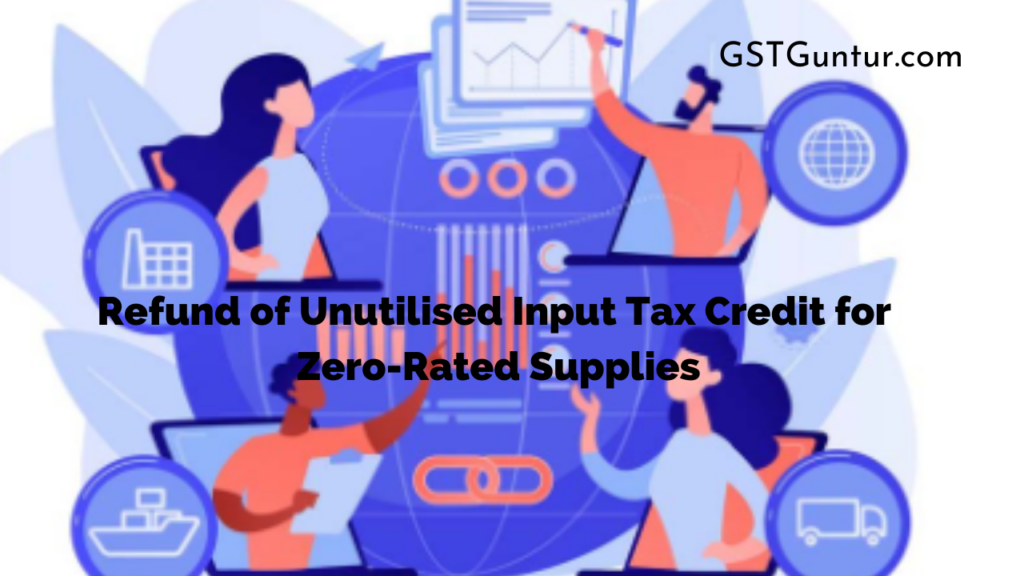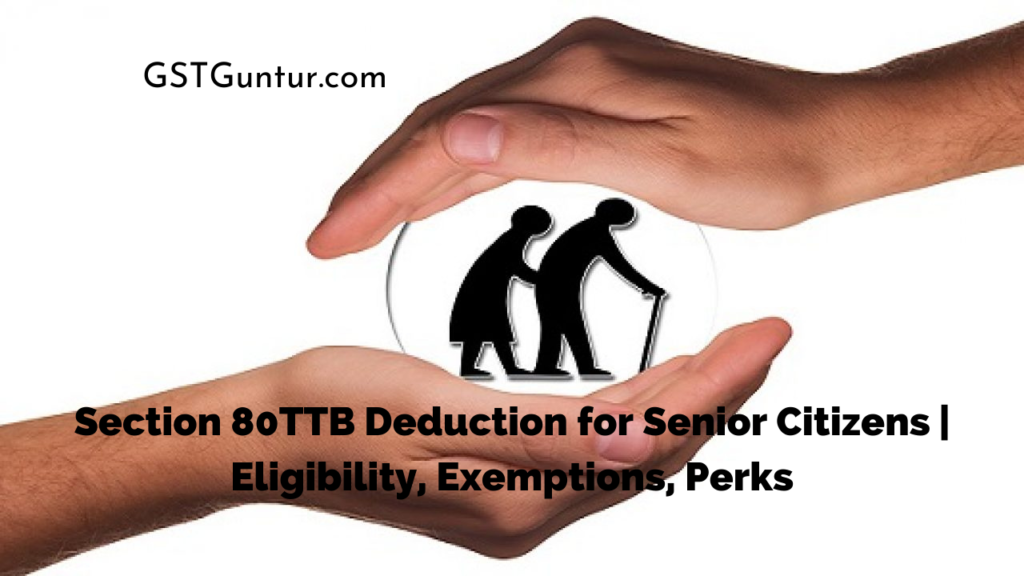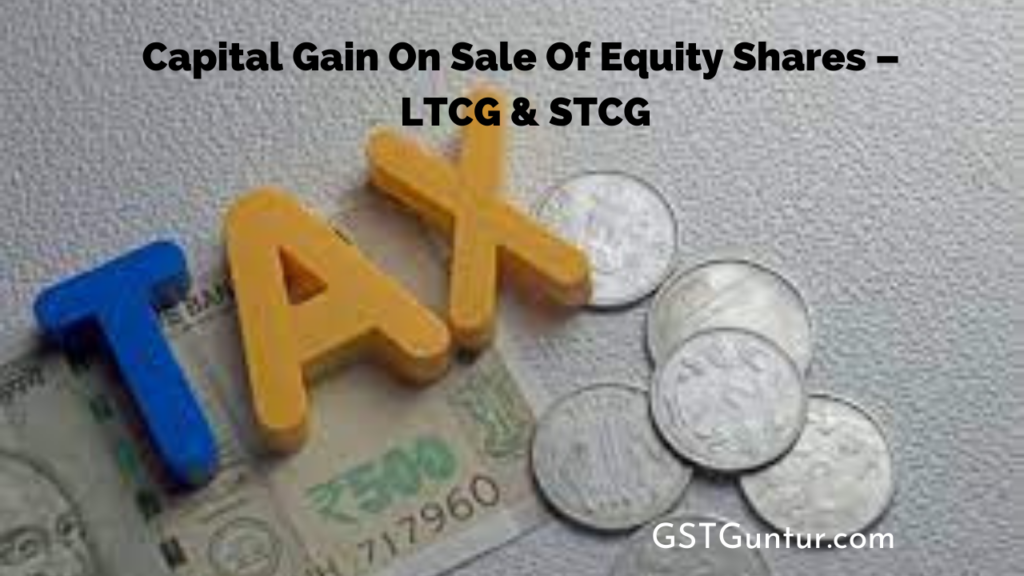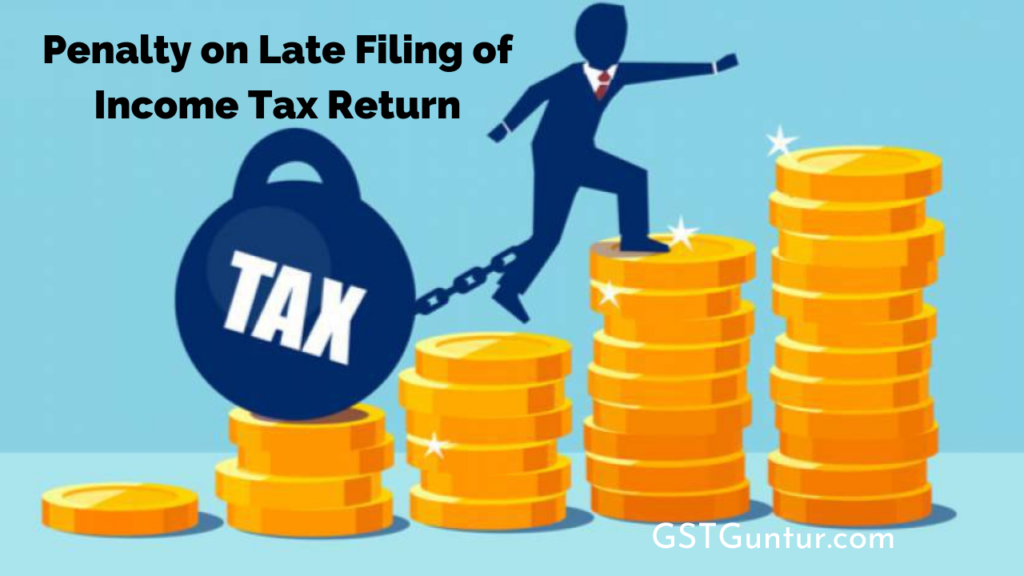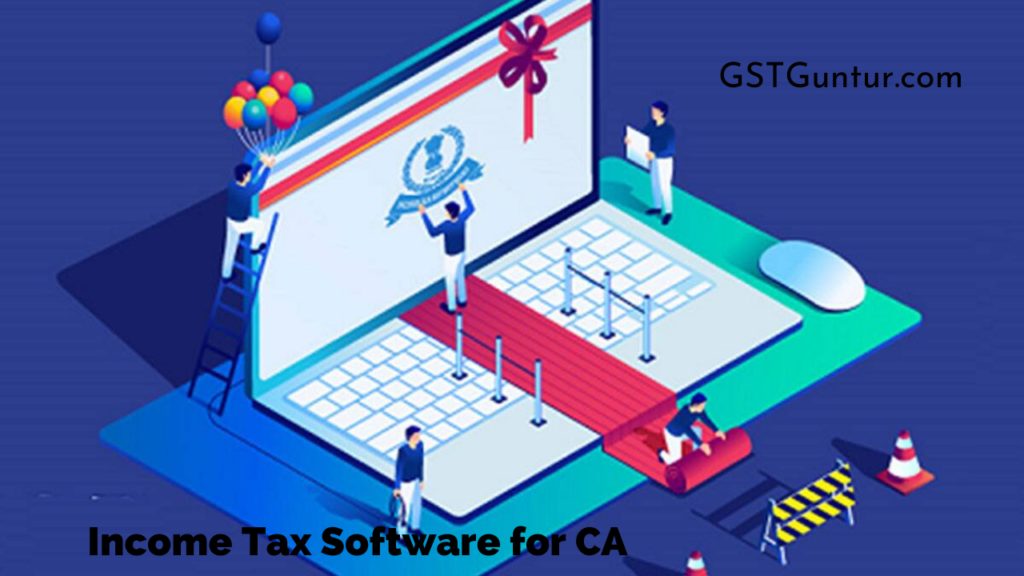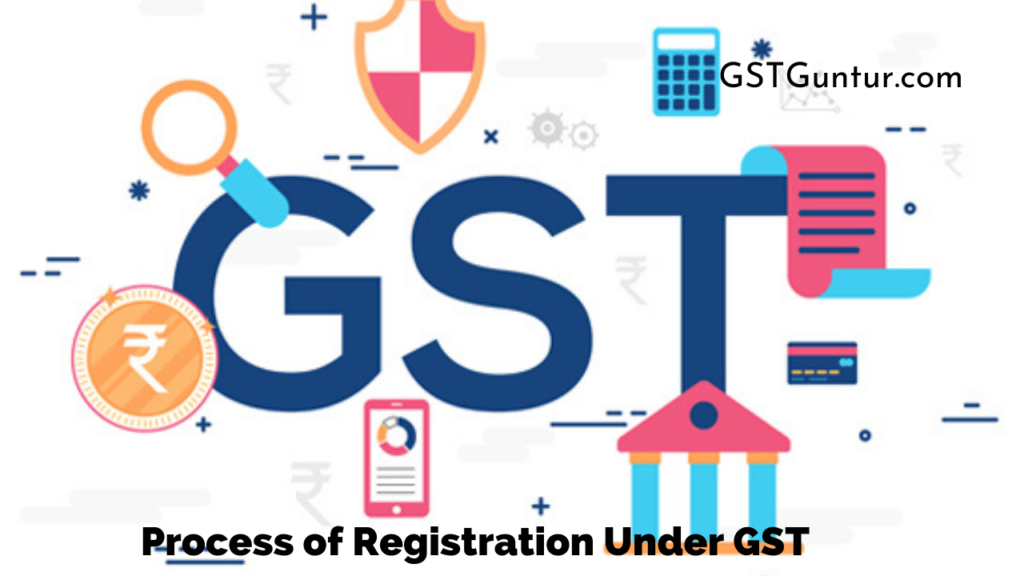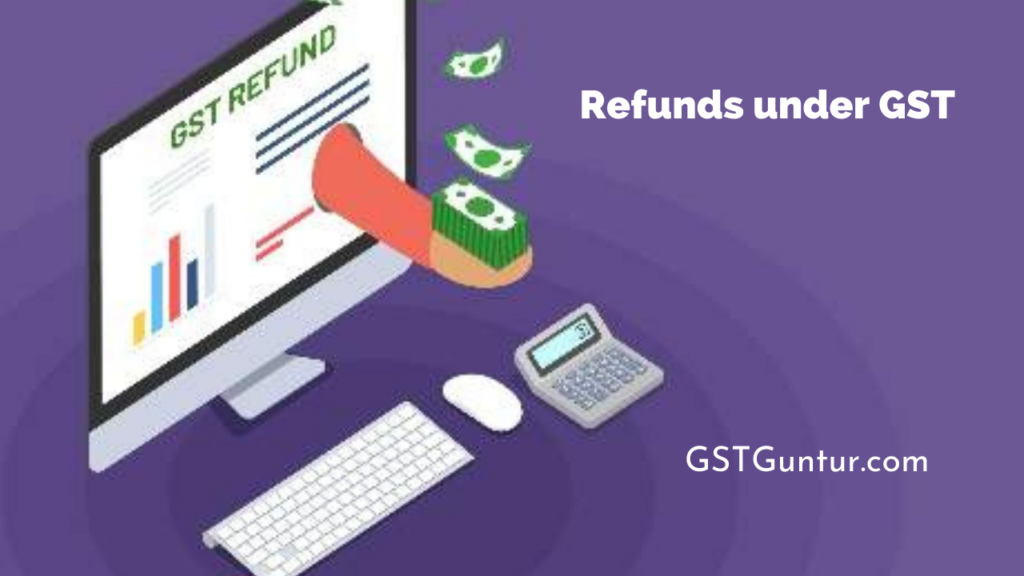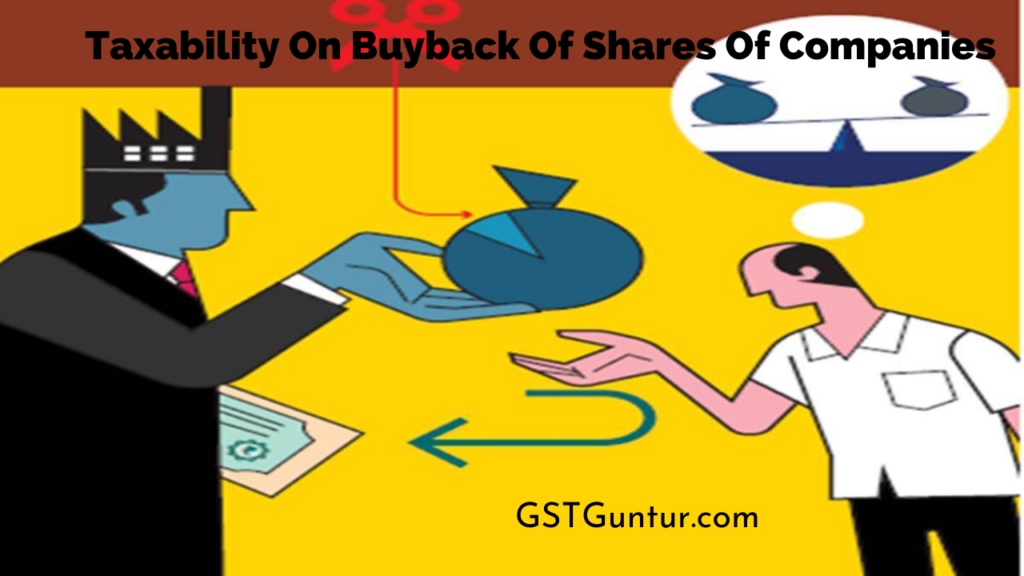Refund of Unutilised Input Tax Credit for Zero-Rated Supplies | Documents Required and How is Refund Amount Calculated?
Refund of Unutilised Input Tax Credit for Zero-Rated Supplies: The GST Law provides multiple options to the zero-rated suppliers to claim a refund of taxes paid on the input side. One of the options is to export under bond or LUT and claim a refund of unutilised ITC. This article discusses zero-rated supplies, the conditions, requirements, and other important factors about such supplies that one needs to know and consider before filing for a refund of the unutilised input tax credit or ITC of zero-rated supplies.
- Introduction to Input Tax Credit (ITC) Under GST
- Introduction to Zero-Rated Supplies
- Refund of ITC Applicable for Zero-Rated Supplies
- Conditions for Claiming Refund of the Unutilised Input Tax Credit
- Steps to Follow for Filing Refund
Introduction to Input Tax Credit (ITC) Under GST
Input tax credit or ITC means that one can reduce the tax they have already paid on inputs while paying tax on output. Input tax credit concerning GST of a registered person is the CGST, SGST/UTGST, or IGST charged on any supply of goods or services or both made to him. It includes IGST charged on imports & tax payable under the reverse charge mechanism.
Suppose you are a manufacturer, supplier, agent, e-commerce operator, aggregator or any of the persons mentioned, registered under GST. Accordingly, you will be eligible to claim Input Credit for the tax paid by you on your purchases.
As GST is a single tax levied all over India (right from the manufacture of goods/ services till it reaches the end customer), the chain does not break, and everybody can benefit from the same, and there is a seamless flow of credit.
Introduction to Zero-Rated Supplies
Zero-rating means that the entire value chain, which is the input and output of the supply, is exempt from tax.
According to the GST Law, exports are meant to be zero-rated. The zero-rating principle is applied for exports and supplies to SEZ. The provisions are mentioned in Section 16(1) of the IGST Act, 2017, which states that “zero rated supply” means any of the following supplies of goods or services or both, which are –
- Export of both goods and services or any one of the two; or
- The supply of goods and services or any one of the two to a Special Economic Zone unit or a Special Economic Zone developer.
Note: All supplies need not be zero-rated.
Refund of ITC Applicable for Zero-Rated Supplies
The application filed for the refund of unutilised ITC on account of zero-rated supplies (with or without payment of tax under a bond or letter of undertaking) has to be accompanied by documentary evidence as may be prescribed to establish that refunds due to the applicant; and associated documentary or other evidence (including the documents mentioned in section 33 of the CGST Act, 2017) as the applicant may provide with to establish that the amount of tax and interest, if any, paid on such tax or any other amount paid concerning the refund claimed was collected from, or even paid by, him and the incidence of the tax and interest was not passed or given to any other person. The spirit of zero-rating is to make Indian goods and services competitive in the international market by ensuring that taxes do not get added to the cost of exports or export duties.
The purpose of zero-rating of exports and supplies to SEZ is sought to be achieved through the provision contained in Section 16(3) of the IGST Act, 2017, which mandates that a registered person making a zero-rated supply is eligible to claim a refund by the provisions as per section 54, CGST Act 2017, under any of the following options –
- He may supply goods and services or any one of the two under the letter of undertaking or a bond, subject to such conditions, safeguards and procedure as may be prescribed, without payment of integrated tax (IGST) and claim a refund of the unutilised ITC of CGST (central tax), SGST (state tax) / UTGST (Union territory tax) and IGST (integrated tax); or
- He may supply goods and services or any one of the two, subject to such conditions, safeguards and procedure as may be prescribed, on payment of IGST and claim a refund of such tax paid on goods and services or any of the two supplied.
Conditions for Claiming Refund of the Unutilised Input Tax Credit
As per section 54 of the Central Goods and Service Tax (CGST), 2017, the conditions required for claiming the refund for the unutilised input tax credit or ITC are discussed below.
Time Period
The refund application has to be made within two years from the relevant date.
What is a Relevant Date?
The Relevant Date, as explained under section 54 of the CGST Act, is summarised as follows –
- If the goods get exported out of India where a refund of the tax paid is available regarding the goods themselves or for the inputs or input services used in those goods –
- if the goods are exported by land or road, the date on which the goods cross the border; or
- if the goods are exported by air or sea, the date on which the aircraft or the ship loaded with the goods leaves India; or
- if the goods are exported by the postal system, the date on which the goods are send-off by the post office concerned to a place outside India;
- If the supply of goods is regarded as deemed exports where a refund of tax paid is available concerning the goods, the date on which the return relating to such deemed exports is furnished;
- If the services exported out of India where a refund of tax paid is available in respect of services themselves or if the inputs or input services used for the services, the date of –
- receipt of payment in changeable foreign exchange (or in INR wherever permitted by the Reserve Bank of India), where the supply of services had been completed before the receipt of the payment; or
- issue of invoice, where the payment for the services was received in advance before the issue date of the invoice;
- In the circumstances where the tax becomes refundable as a consequence of judgment, order, decree or direction of the appellate tribunal, appellate authority or any other court, the date of hearing of such judgment, order, decree or direction;
- In the case of a refund of the unutilised ITC as per clause (ii) of the first proviso to sub-section (3), the due date for furnishing of return as per section 39 for the period in which the claim for the refund arises;
- In the case where tax is paid under the provisions of the Act or the rules made thereunder, the date of adjustment of tax after the final assessment is taken;
- For a person, except for the supplier, the date of receipt of goods or services or both by the person; and
- The date of payment of tax on any other occasion.
Exceptions for the Refund
There shall be no refund of any unutilised ITC allowed under the following cases –
- If the unutilised ITC is for GST paid on goods exported out of India, which are liable to excise duty.
- If the supplier of goods has already availed duty drawback on the excise duty paid or claims the refund on the integrated tax paid on such supply.
- No refund for closing stocks.
Documents Required as Evidence
As mentioned in rule 89(2), to fill the application under the sub-rule (1) of 89 of the CGST Act 2017, one must provide with any of the following documentary evidence as applicable to prove that a refund is due to the person applying for the same –
- A copy of the order and the reference number of the order passed by the appropriate officer or an appellate tribunal or authority or any other court resulting in such refund or reference number of the payment of the amount as mentioned in section 107(6) and 112(8) claimed as refund.
- A statement containing the date and number of shipping bills or export bills and the date and number of the appropriate export invoices if the refund concerns the export of goods.
- A statement containing the date and number of invoices and the relevant Bank Realisation Certificates (BRC) or Foreign Inward Remittance Certificates (FIRC), if in a case where the refund is regarding the export of services.
- A statement mentioning the number and date of invoices, the evidence concerning the endorsement as specified in the second proviso to sub-rule (1) and the details of payment, along with the proof of the same, made by the recipient to the supplier for authorised operations as defined in the Special Economic Zone (SEZ) Act of 2005, when the refund is on account of supply of services made to an SEZ unit or an SEZ developer.
- A statement containing the date and number of invoices as provided in rule 46 along with the evidence regarding the endorsement mentioned in the second proviso to sub-rule (1) for the supply of goods made to a Special Economic Zone unit or developer.
- A declaration mentioning that the SEZ unit or developer has not availed the ITC of the tax paid by the supplier of goods or services or both, in a case where the refund is on account of supply of goods or services made to an SEZ unit or an SEZ developer.
- A statement containing the date and number of invoices and similar evidence mentioned in this case where the refund is concerning deemed exports.
- A statement containing the date and number of the invoices received and issued during a tax period if the claim pertains to refund of any unutilised ITC under section 54(3) where the credit has accumulated owing to the rate of tax on the inputs being higher than the same on output supplies, other than nil-rated or fully exempt supplies.
- A statement mentioning the details of the transactions considered intra-state supply but afterwards held to be inter-state supply.
- A statement conveying the details of the claim amount regarding excess payment of tax.
- The reference number of the concluding assessment order and a copy of the said order if the refund arises on account of the finalisation of the provisional assessment.
- A declaration mentioning that the incidence of tax, interest or any other amount claimed as refund has not been passed or given to any other person, in a case where the refund amount claimed is not more than Rs. 2,00,000: But a declaration is not required to be provided for cases covered under clause (a)/(b)/(c)/(d)/(f) of section 54(8).A certificate as per FORM GST RFD-01 (Annexure 2) provided by a chartered or a cost accountant to the effect that the incidence of tax, interest or any other amount claimed as refund has not been passed on
- to any other person in a case where the refund amount claimed is more than Rs. 2,00,000: But a certificate is not required to be provided for cases covered under clause (a)/(b)/(c)/(d)/(f) of section 54(8).
Refund on Provisional Basis
In some instances, on applying for a GST refund, the GST Officer grants Provisional Refund. There are some rules for Provisional Refund because the entire refund process takes a long time to complete. Therefore, a genuine claimant or exporter can face working capital shortfalls for the time being due to refunds getting delayed.
The refunds are then released temporarily to the extent of 90% before complete scrutiny of the application and associated records to solve this problem. Once the entire checking is done within the specified time limit, the final order for sanction or rejection (RFD-06 or RFD-08) replaces the provisional refund order (RFD-04). Consequently, the actual refund amount decided in the concluding order gets adjusted with the amount already refunded temporarily.
The Provisional Refund gets granted after the initial scrutiny of the application and documents by the Jurisdictional GST Officer. Provisional refund is applicable for Zero-rated Supplies, which include:
- Export of goods or services or both.
- Supplies made for SEZ units and developers.
In these cases, the GST officer grants the provisional refund to the extent of 90% of the refund claimed. The refund claimed will be excluding the amount of ITC that got adjusted, if any, on applying for the refund in RFD-01A/01. The issue of Form RFD-04 shall grant provisional Refund within seven days after giving the Acknowledgement in RFD-02. This Provisional Refund amount gets directly credited to the refund applicant’s bank account.
Note: The Provisional Refund is not granted if the applicant was prosecuted for the offence under any Indian law where the tax evaded is more than Rs. 2,50,00,000 anytime in the last five years preceding the tax period for which refund is claimed.
How is the Refund Amount Calculated?
The grant of refund in cases where the refund of accumulated Input Tax Credit (ITC) is of zero-rated supply is calculated as:
Refund Amount = (Turnover of zero-rated supply of services + Turnover of zero-rated supply of goods) x Net Input Tax Credit (ITC) ÷ The Total Adjusted Turnover
Where
- The Refund Amount is the maximum refund that is admissible.
- Net Input Tax Credit ITC is the input tax credit taken on inputs and input services during the relevant period, excluding the input tax credit taken for which refund is claimed under rule 89(4A) or 89(4B) or both.
- Turnover of zero-rated supply of goods is the value of zero-rated supply of goods made during the relevant period of time without payment of tax under a letter of undertaking or a bond, other than the turnover of supplies regarding which refund is claimed as mentioned in rule 89(4A) or rule 89(4B) or both.
- Turnover of zero-rated supply of services is the value of zero-rated supply of services made without payment of tax under a letter of undertaking or a bond, calculated as:
- Zero-rated supply of services is the total of the payments received during the relevant period for zero-rated supply of services and zero-rated supply of services where supply has been completed for which payment had been received in advance in any period before the relevant period lowered by advances received for the zero-rated supply of services for which the supply of services was not concluded during the applicable period.
- The Total Adjusted Turnover is the turnover in a State or a Union territory, as defined under clause (112) of section 2, which excludes –
- The value of all other exempt supplies other than the zero-rated supplies.
- The turnover of supplies regarding which refund is claimed during the relevant period as per rule 89(4A) or 89(4B) or both (if any).
- The Relevant Period is the period for which the claim is filed.
Steps to Follow for Filing Refund
Using the online GST Portal, the application for refund of unutilised input tax can be filed online by following the below steps.
Step 1: Open the GST Portal and login into your GST account.
Step 2: Navigate to Services, then go to Refunds followed by Application for Refund.
Step 3: Select the Refund of ITC option on Export of Goods & Services without Payment of Integrated Tax or on account of supplies made to SEZ unit/SEZ developer (without tax payment) as required.
Step 4: Select the relevant financial year and the month for which a refund is requested, and then click on Create button. A refund application can only be made once a proper GST return has been filed for that period.
Step 5: Enter the details relevant to the export of goods or services or both as required under Statement 3. You can upload the JSON file generated by your software or use the department’s offline utility.
Step 6: Enter these amounts in the form –
- The turnover of the zero-rated supply of goods and services.
- The total adjusted turnover.
- The total input tax credit accessible for Cess.
The online system will automatically calculate the maximum amount of refund based on the figures entered and the net ITC available in the account.
Step 7: Enter the breakup for a refund requested under Integrated Tax, Central Tax, State/UT Tax & Cess.
Step 8: Select the bank account that is requested for the refund.
Step 9: Click on Proceed and submit your application using EVC or DSC.
